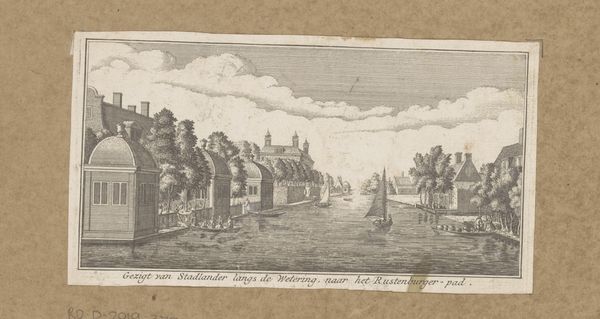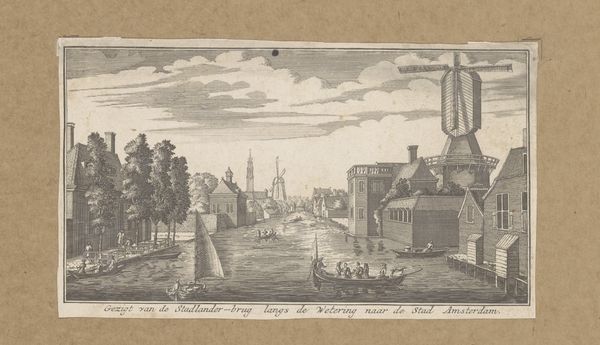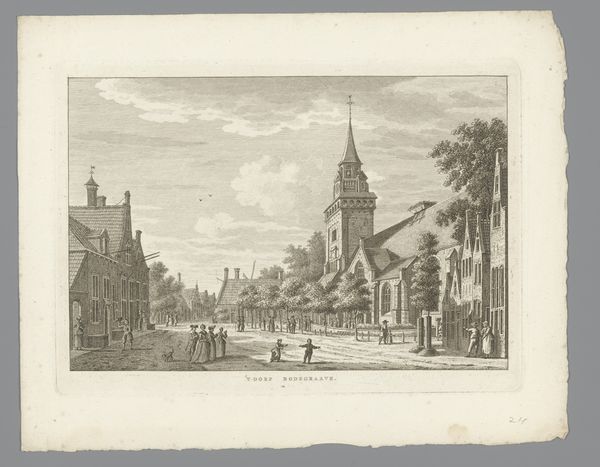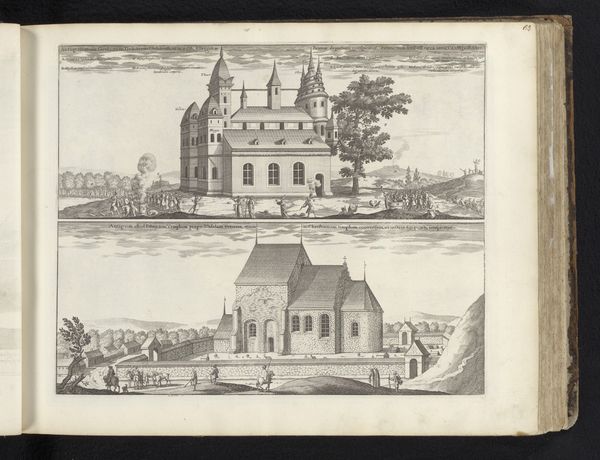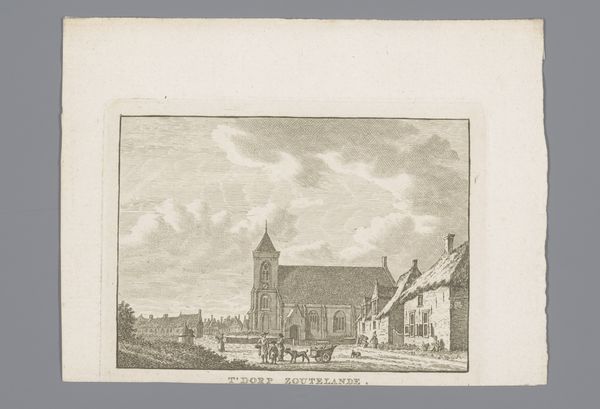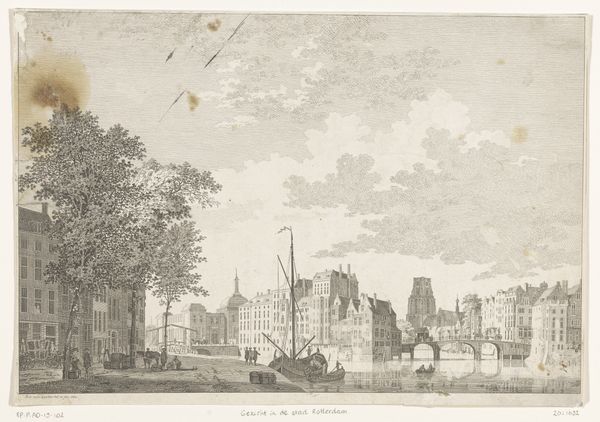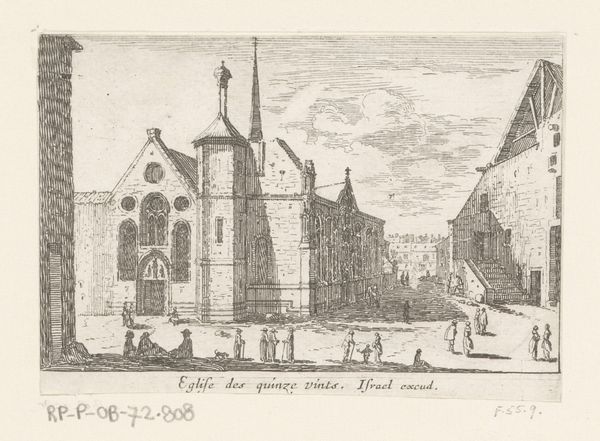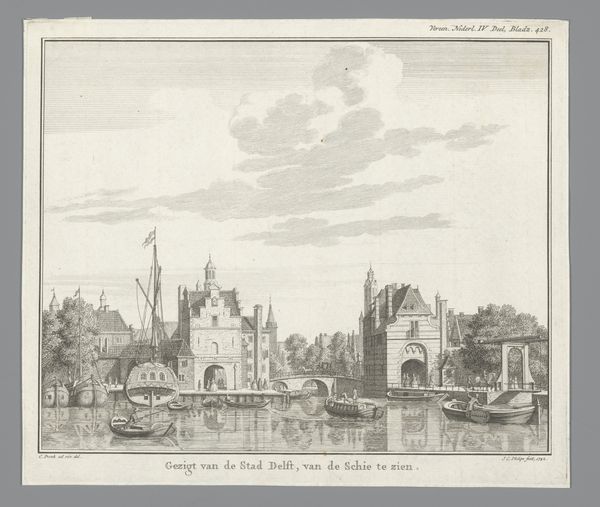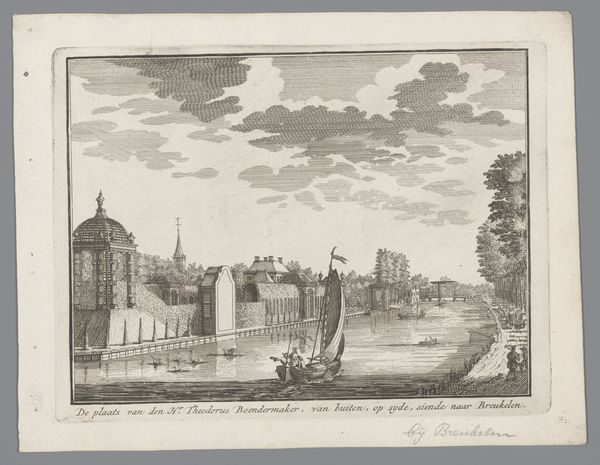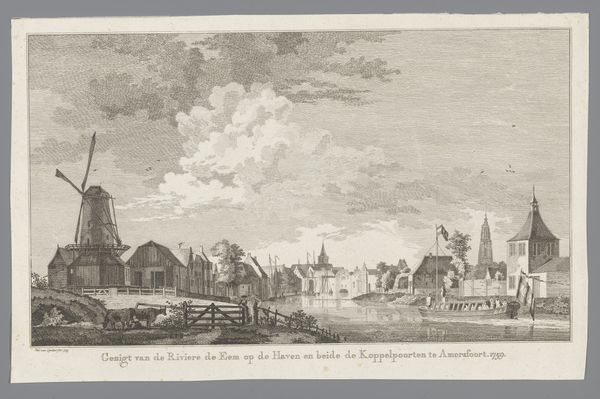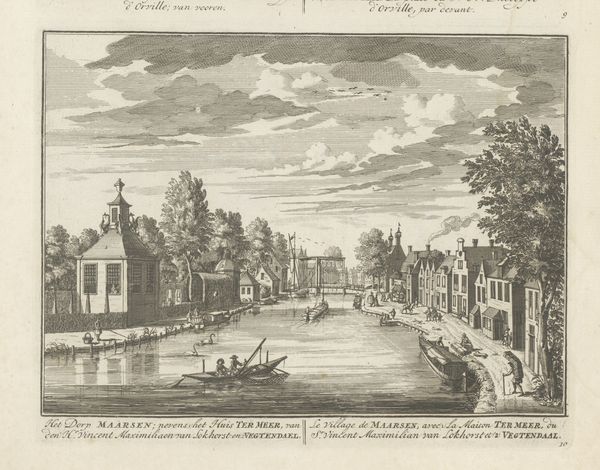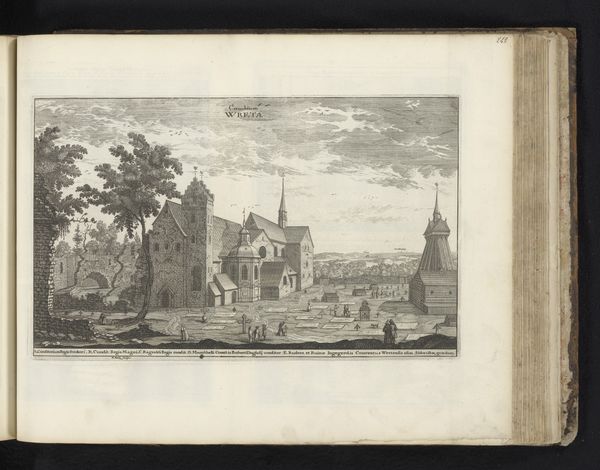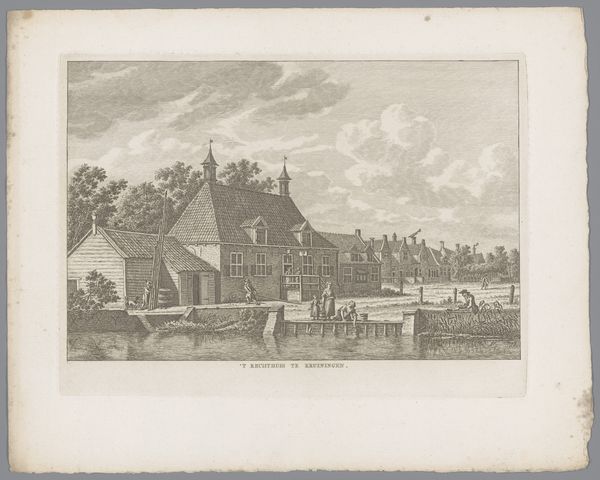
Gezicht vanaf het eind van de Overtoom bij het Leidse veerhuis 1725 - 1764
0:00
0:00
print, etching
#
baroque
#
dutch-golden-age
# print
#
etching
#
landscape
#
cityscape
Dimensions: height 122 mm, width 166 mm
Copyright: Rijks Museum: Open Domain
Curator: This etching, "View from the End of the Overtoom by the Leidse Veerhuis" dates from between 1725 and 1764 and is attributed to Gerardus Condet. It's currently held in the Rijksmuseum. Editor: It’s charming, though a bit austere at first glance. The delicate lines create a placid, almost dreamlike atmosphere. I find myself wondering about the daily routines captured here. Curator: Absolutely. Waterways as arteries of trade, of connection. Think about the Golden Age symbolism embedded in a view like this—prosperity, progress, but also the precarious nature of wealth, all riding on these ships. Editor: Yes, and the materiality of it—the ink on paper, of course, but also the textures of the buildings rendered with such precision. The way he suggests the rough-hewn timber of the houses and loading areas, likely constructed with great manual labor, really speaks to the social and economic fabric of the time. Curator: The octagonal building—likely some sort of merchant’s pavilion. In this era of nascent capitalism, this architectural form appears so frequently; each one becomes a symbolic locus of financial calculation. And that carriage—a status marker but also a suggestion of trade and travel, of moving goods and people through space. Editor: And barrels are being moved – materials transformed and transported for trade, supporting the local economy! The workers visible in the scene underscore that element of labor rarely given such clear visual expression in the art of the Dutch Golden Age. Curator: It also makes me think of memory. These visual representations create and preserve a cultural understanding and memory of Amsterdam, not just as a place but as a living, breathing entity engaged in trade and society. Editor: Exactly. The artwork makes visible the everyday realities upon which that golden age was built. It also serves as an excellent reminder that "art" is equally made by labor and that both exist intertwined! Curator: Thank you. It enriches our appreciation of not just what we see, but the unseen, yet no less vital, systems at play. Editor: Indeed. By considering its material circumstances and the social realities they reflect, we grasp a bit more fully how it all came together.
Comments
No comments
Be the first to comment and join the conversation on the ultimate creative platform.

